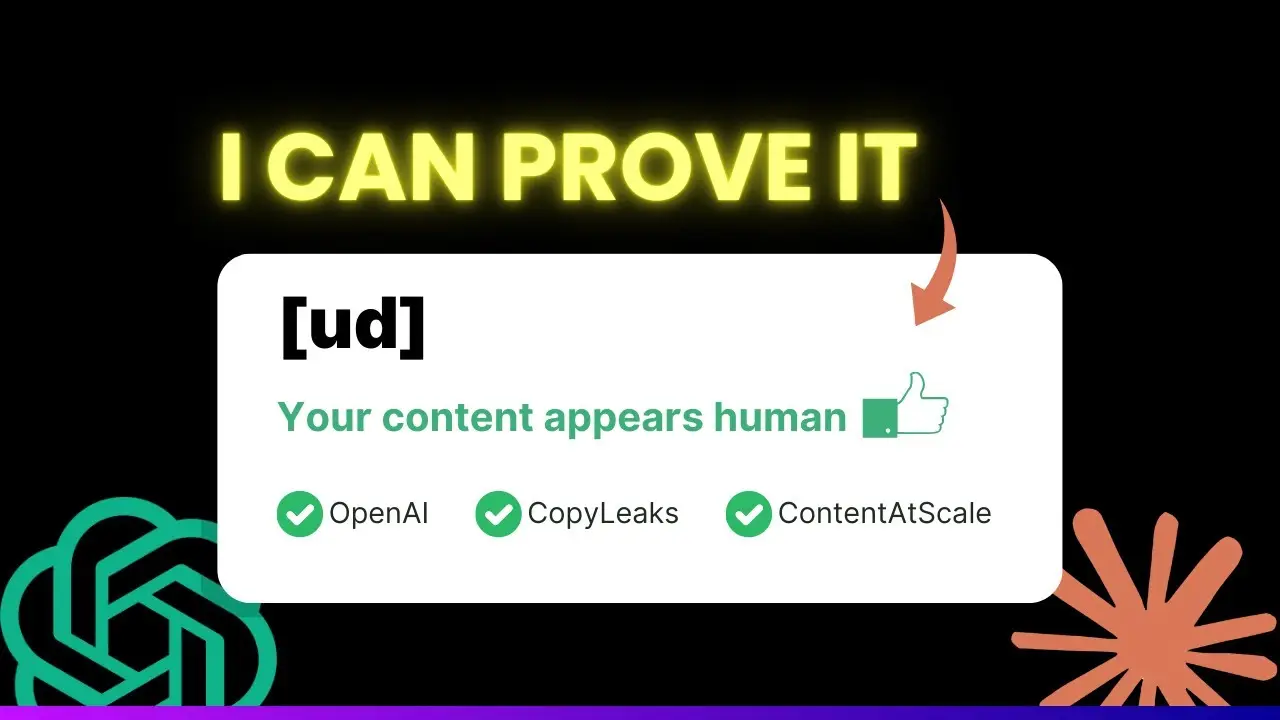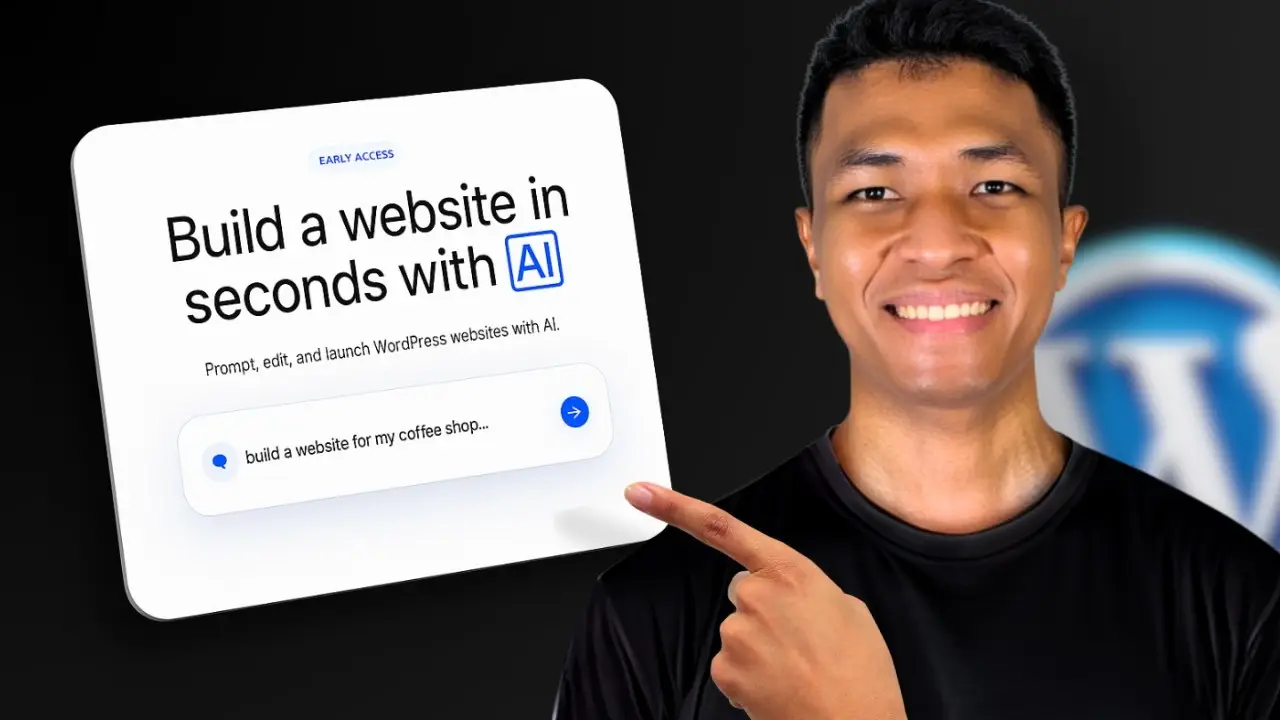- Key Takeaways:
- Avoid overly long articles—keep it concise and relevant.
- Ditch cliché words and phrases that scream “AI-generated.”
- Format your content with bullet points, shorter paragraphs, and real-life examples for readability.
Let’s face it: AI-generated content is everywhere. And while it’s great for productivity, sometimes it can feel a bit… robotic. I get it. I’ve been there too. You’ve probably scrolled past an article or two and thought, “Yikes, this was definitely written by a robot.” But here’s the good news: you don’t need fancy, expensive tools to make your AI-generated content sound human. Today, I’ll walk you through five simple (and free!) steps to humanize your AI content effortlessly.
Before we dive in, check out this quick video demonstration I made to show you exactly how these steps work in action:
Step 1: Keep It Short and Sweet
Have you ever stumbled upon an article that just won’t end? Yeah, me too—and it’s exhausting. Human readers prefer concise, direct information. So if your topic is straightforward, don’t stretch it into a 3,000-word dissertation. Do you really need 2,000 words explaining how to send an email? Probably not.
Here’s a quick guideline:
- Aim for around 500–600 words for most blog posts.
- If the topic is super simple, even fewer words might do the trick.
- Shorter articles are easier on the eyes and feel more authentic.
Remember, humans naturally seek the path of least resistance. Don’t make readers wade through mountains of fluff; keep it short and sweet.
Speaking of concise writing, I’ve written before about crafting the perfect AI prompt for blog posts. It’s worth checking out if you’re serious about improving your AI-generated content.
Watch the full video here: How to Humanize AI Content for Free (Seriously!)
Banish Those Cliché Words
You know those cheesy buzzwords AI loves throwing around? Words like elevate, mastering, or—my personal pet peeve—”delve.” These terms used to sound impressive, but now they’re glaring red flags for AI-generated content.
Instead of sounding like every other generic article out there, tell your AI explicitly to avoid these clichés. Here’s a quick list of overused words you should blacklist:
- Elevate
- Mastering
- Unleash
- Delve
- Revolutionary
- Game-changing
I’ve actually compiled a comprehensive list of these overused words in ChatGPT if you’re interested in diving deeper.
Break It Down with Bullet Points
Humans love bullet points. Why? Because they’re easy on the eyes and simple to digest. AI tends to ramble on in dense paragraphs packed with information—exactly what we want to avoid.
Instead of letting your content become one giant wall of text, instruct your AI assistant to break down key points into bullet lists whenever possible. This makes your content:
- Easier to skim
- More visually appealing
- More reader-friendly
And don’t stop at bullets—tables and quotes can also help structure information clearly and logically.
Shorter Paragraphs = Better Readability
Ever clicked away from an article because it was just a never-ending wall of text? Yeah, me too. Our brains naturally prefer information that’s broken into smaller chunks. That’s why shorter paragraphs (think two or three sentences max) are crucial for readability.
Take inspiration from popular authors like Tim Ferriss or Greg McKeown—they keep their writing tight and punchy. Shorter paragraphs create more white space on the page, making your content visually appealing and easier to scan quickly.
If you’re curious about other ways to structure your content effectively using WordPress Gutenberg blocks, check out my post on 10 Gutenberg editor features that will supercharge your WordPress workflow.
Should You Ditch ChatGPT for Claude?
Now here’s something interesting: while ChatGPT is powerful and versatile, it’s not always the best choice for creative writing tasks. If you’ve been struggling with robotic-sounding outputs from ChatGPT lately, consider experimenting with Claude instead.
Claude tends to produce more dynamic responses with subtle variations that feel natural and conversational right off the bat. It’s less predictable than ChatGPT—which can be a good thing when you’re aiming for authenticity.
That said, there’s no need to completely abandon ChatGPT if you’re satisfied with its results. But if creativity is essential for your project, Claude might just surprise you with its natural-sounding outputs.
If you’re curious about Claude’s capabilities in boosting SEO as well as humanizing content, check out my detailed guide on using Claude 3.5 Sonnet Artifacts.
Quick Demo: Does This Actually Work?
To prove these tips aren’t just theory—I tested them myself using Claude and an AI detection tool called Undetectable.ai. Here’s what happened:
I created a simple prompt that included all my recommended elements:
- Moderate word count (300–500 words)
- Bullet points and tables
- Shorter paragraphs (2–3 sentences each)
- Blacklisted cliché terms
After generating an article with Claude using this prompt structure, I pasted it into Undetectable.ai—a popular tool designed to identify whether content is human-written or AI-generated.
And guess what happened?
The tool confidently labeled my AI-generated article as “100% human.” No kidding! Even though we know it’s AI-generated behind the scenes, these simple adjustments made all the difference.
Quick Demo Recap (for Skeptics)
Let’s quickly recap those five easy steps again:
| Step | What You Should Do |
|---|---|
| 1 | Keep articles concise (around 500–600 words). |
| 2 | Avoid cliché terms (“elevate,” “master,” etc.). |
| 3 | Use bullet points and tables liberally. |
| 4 | Limit paragraphs to two or three sentences max. |
| 4 | Consider using Claude instead of ChatGPT for creative tasks. |
And remember—humanizing isn’t about tricking detectors; it’s about genuinely connecting with your readers by providing valuable insights in an engaging way.
Final Thoughts: It’s About Real Connection
At its core, humanizing AI-generated content isn’t about fooling detection tools or search engines—it’s about genuinely connecting with your audience. Readers crave authenticity and relatable experiences; they want real insights rather than generic fluff churned out by algorithms.
So next time you generate some AI-assisted text:
- Take five minutes to sprinkle in personal anecdotes.
- Add visuals or screenshots relevant to the topic.
- Double-check facts provided by AI tools before publishing.
- Write conversationally—just like you’d talk in person.
- Inject humor or pop-culture references when appropriate.
- Ask engaging questions throughout your piece.
Remember: AI is just a tool—a powerful one—but still just a tool at your disposal as a creator who understands their audience best.
If you’d like more practical tips on making sure your AI content stands out from competitors’ robotic-sounding articles online today—check out my comprehensive guide on how to really humanize AI content.
Humanizing doesn’t have to cost money—it simply requires intention plus creativity combined with smart prompting strategies outlined above!
Happy creating!






